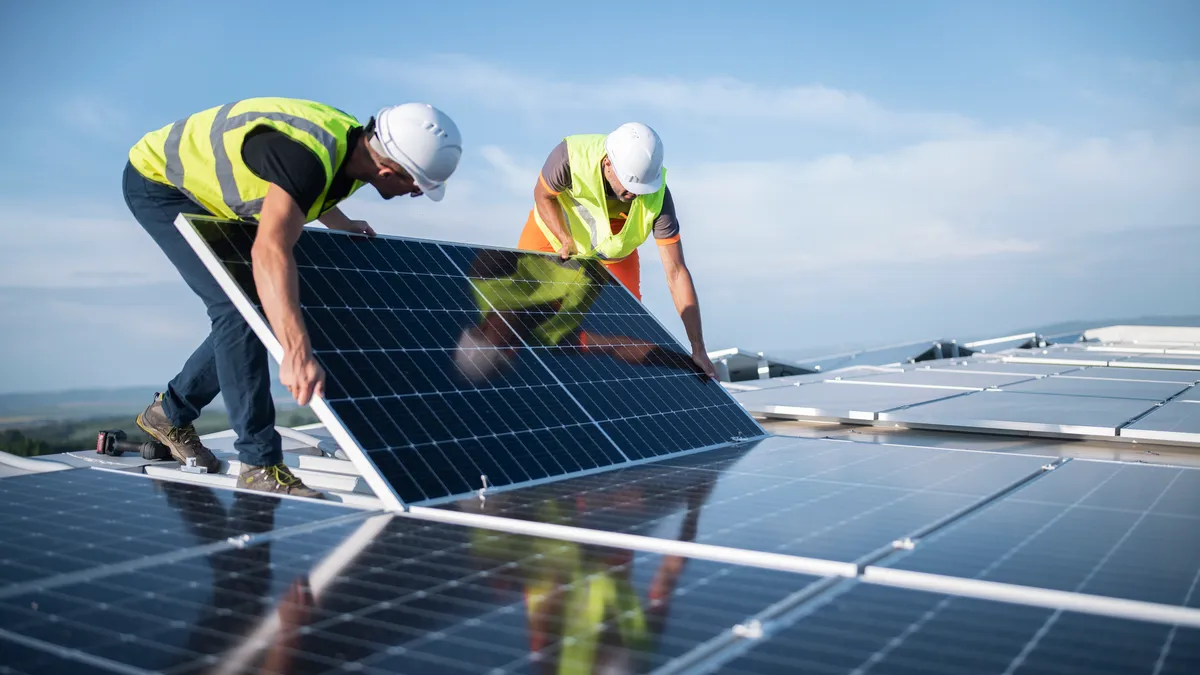Dive Brief:
- South Korea-based energy company Q Cells announced Wednesday it will spend more than $2.5 billion on a solar manufacturing plant in Georgia, part of a plan to “to establish a complete solar supply chain in the United States.”
- The new plant in Bartow County will manufacture 3.3 GW of solar ingots, wafers, cells and finished panels, making it the largest fully integrated solar manufacturing site in the U.S, according to the release. A 2.2 GW expansion at its Dalton, Georgia, facility is also planned.
- The build-out of the new facility will come after the Dalton expansion, with commercial production slated for late 2024. The investment is expected to bring the South Korea-based manufacturer’s total solar panel production capacity in the state to 8.4 GW by next year.
Dive Insight:
Q Cells’ solar investment, which President Joe Biden called the largest in U.S. history, follows the signing of the Inflation Reduction Act, which includes a host of incentives and tax credits to spur clean energy production.
Biden said in a statement that the Georgia plant will “bring back our supply chains so we aren’t reliant on other countries, lower the cost of clean energy, and help us combat the climate crisis.”
Q Cells is upping its investment across the solar value chain from raw materials to finished product. As part of this effort, parent company Hanwha recently became the leading shareholder in polysilicon producer REC Silicon. Polysilicon is a key feedstock for solar.
Efforts are also underway to manufacture low-carbon polysilicon at the Norway-headquartered company’s factory in Moses Lake, Washington, which is powered by emission-free hydroelectricity. That facility will restart production in the second half of 2023.
Q Cells began operating in Georgia in 2019, and announced expansion plans last year to grow capacity at its Dalton facility. With this announcement, the facility is set to produce 5.1 GW annually starting this year.
“By building out a strong, reliable solar supply chain in America, we will tackle the climate crisis head-on while also creating good paying, manufacturing jobs right here at home,” said U.S. Secretary of Energy Jennifer Granholm.















